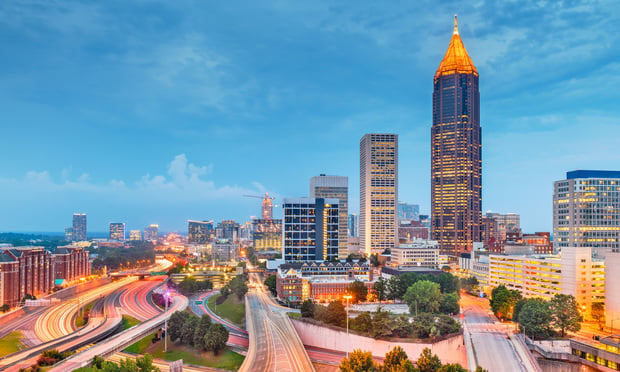
ATLANTA—Flexible workspaces—from executive office suites to hot desks to coworking office space and beyond—started gaining momentum during the Great Recession. Although some office industry watchers say the demand is waning, most agree the concept is here to say and statistics demonstrate room for growth.
According to globalworkplaceanalytics.com, 3.7 million employees—just under 3% of the workforce—now work from home at least half the time. The employee population as a whole grew by 1.9% from 2013 to 2014, while the telecommuter population grew 5.6%.
“Not surprisingly, the average in-office workspace has declined in recent years,” Robert Gibbs, president and CEO of Gibbs Planning Group, tells GlobeSt.com. “Today, the average space per worker is between 130 and 150 square feet, down from 200 square feet. Employers are moving more workers into smaller spaces.”
Just like in the residential sector, Gibbs says, the move back to cities and suburbs close to city centers, transit lines, shops, restaurants, and apartments are factors in the workspace trend. Space in developed areas is more expensive and harder to find, he says, but his firm is finding that's where younger workers want to be.
“By being located near urban services, companies are saving space,” Gibbs says. “That means fewer workers drive, so less parking spaces are needed. Restaurants and gyms are nearby, so there's no need for a company cafeteria or health club.”

ATLANTA—Flexible workspaces—from executive office suites to hot desks to coworking office space and beyond—started gaining momentum during the Great Recession. Although some office industry watchers say the demand is waning, most agree the concept is here to say and statistics demonstrate room for growth.
According to globalworkplaceanalytics.com, 3.7 million employees—just under 3% of the workforce—now work from home at least half the time. The employee population as a whole grew by 1.9% from 2013 to 2014, while the telecommuter population grew 5.6%.
“Not surprisingly, the average in-office workspace has declined in recent years,” Robert Gibbs, president and CEO of Gibbs Planning Group, tells GlobeSt.com. “Today, the average space per worker is between 130 and 150 square feet, down from 200 square feet. Employers are moving more workers into smaller spaces.”
Just like in the residential sector, Gibbs says, the move back to cities and suburbs close to city centers, transit lines, shops, restaurants, and apartments are factors in the workspace trend. Space in developed areas is more expensive and harder to find, he says, but his firm is finding that's where younger workers want to be.
“By being located near urban services, companies are saving space,” Gibbs says. “That means fewer workers drive, so less parking spaces are needed. Restaurants and gyms are nearby, so there's no need for a company cafeteria or health club.”
© 2025 ALM Global, LLC, All Rights Reserved. Request academic re-use from www.copyright.com. All other uses, submit a request to [email protected]. For more information visit Asset & Logo Licensing.




